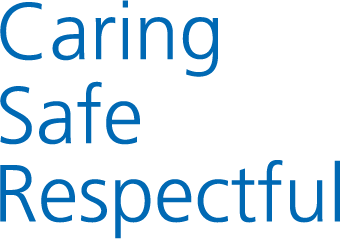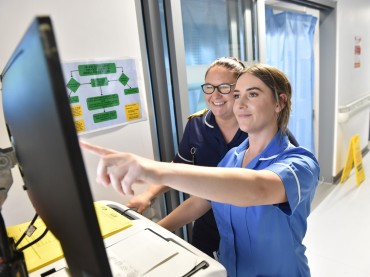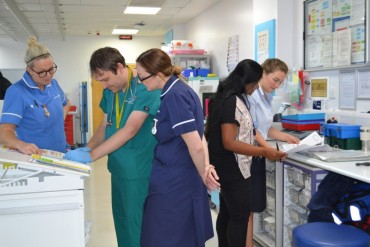Colourful semantics is a therapy approach which uses colour coded pictures and symbols to help children understand and use phrases and sentences. It can be used to introduce new vocabulary and increase the number the words a child understands and uses. It can also be used to help children understand and use longer and more complex sentences.
The Blank Language Levels are a way of thinking about the types of questions we ask children. There are four Blank levels which increase in complexity from simple “what is it?” naming questions at level 1, through to complex “why?” questions at level 4. Blank levels can help us identify the level of question is able to understand and respond to. It is also an approach which can be used to develop a child's level of understanding. Adults can use the Blank Level framework to think about and adapt the type of questions they ask a child so that they are at the correct level for the child's current level of understanding. Then the adult can use practice activities to extend the child's understanding up to the next level.
This workshop explains how different speech sounds are made and provides strategies for the adult to use in order to help them support the child to make speech sounds they currently find hard to produce. We explain how and where in the mouth different sounds are made, how adults can help children to change their speech production and suggest strategies / activities for adults to use in order to help children practice and generalise their new speech sound into their speech.
This workshop explains how children learn new words and considers the different types of words children learn and use. We share strategies and activity ideas for ways to help children learn, remember and recall new words so that they can extend their vocabulary. Having a good vocabulary is an important communication skill so that children can understand and use a wide range of words. Evidence shows that having a good vocabulary knowledge also supports children with their academic learning.
This workshop is designed to help parents understand how children learn to use early words and phrases when they are starting to develop their language skills. We share a range of approaches, strategies and ideas which family can try at home to help children develop their early language skills.
Makaton uses signs, along with speech and symbols to support those who need an alternative or additional means of communication.
We offer:
Makaton Taster session – This is a 90 min online session, to provide an overview of how and why we might use Makaton, as well as teaching you approx.. 30 signs to get started with.
Makaton Level 1 – full day (or two half days) – In this longer workshop, you will learn more about Makaton and how we use the signs and symbols. You will also learn stages 1 and 2 of the Makaton core vocabulary and have lots of time to practise!
Face to Face workshop 2 hours
To learn more about social communication and interaction differencesTo have a basic understanding of theory of mindExplore ways to help and resources to use
This workshop looks at the different levels of tuning in and where breakdowns can happen. It also discusses strategies to use at each of the levels.
Face 2 Face 1.5 hour workshop
Aims:
- What are comic strip conversations?
- How and why comic strip conversations can help
- How to use comic strip conversations
2 hour online workshop where parents will learn:
- To have a better understanding of social communication difficulties
- To have a better understanding of the stage of communication your child is at
- To learn some general strategies to help your child at home
- To have some practical ideas to help your child
- A chance for you to meet other parents with children with similar needs
This is for children who are own agenda stage (pre-intentional) and requester stage (sending intentional requests physically or with some words)
2 Hour online workshop where parents will learn
- To have a better understanding of social communication difficulties
- To have a better understanding of the stage of communication your child is at
- To learn some general strategies to help your child at home
- To have some practical ideas to help your child
- A chance for you to meet other parents with children with similar needs
For children who are beginning to communicate for social purposes, to share an interest with others and those who are beginning to attempt back and forth conversations and are interested in interacting with other children.
Face 2 Face 1.5 hour workshop
Aims:
1. What is a social story
2. How do they help
3. How to write one
Parent programme (Online or F2F – Day or evening offered) for autistic children and those needing social communication support
5 x 2.5 hour group session – parents only
2 x Videofeedback session per family with child and parent.
Parent programme (Online or F2F – Day or evening offered) for verbal autistic children (age 4 –8 as a guide) and those needing social communication support – Looks at tuning in and theory of mind as well as more elaborate communication/conversational skills
The workshop is for parents of younger children 7 and under and provides further information about stammering in younger children, including factors that impact stammering. The workshop also provides the opportunity to go away with a home plan, following discussions around how to support your child’s confident communication at home.
This is for children with delayed language who are at a range of stages of communication. They may not yet be sending messages intentionally, but rather reacting to the environment around them. They may be using single words (this includes signing / pointing to symbols).
Aims:
- Learn about language development
- Understand your child’s stage of communication
- Learn some new strategies and activities to support your child’s communication
- Make a plan to use at home
This is for children who we feel would be helped by using a total communication approach. Total communication is about accepting any means of communication and finding and using the right combination of communication approaches for your child.
Aims:
- To learn about what total communication is
- To understand why it is helpful
- To think about how to use it effectively for your child
- To make a plan for home



